The post Digital Detox or Tech-Enhanced Relaxation? Finding Balance on the Ocean Shore appeared first on Ocean Data Portal.
]]>This article explores the pros and cons of both approaches and offers insights on how to strike the perfect balance between unplugging and staying connected while enjoying a beach vacation.
The Appeal of a Digital Detox
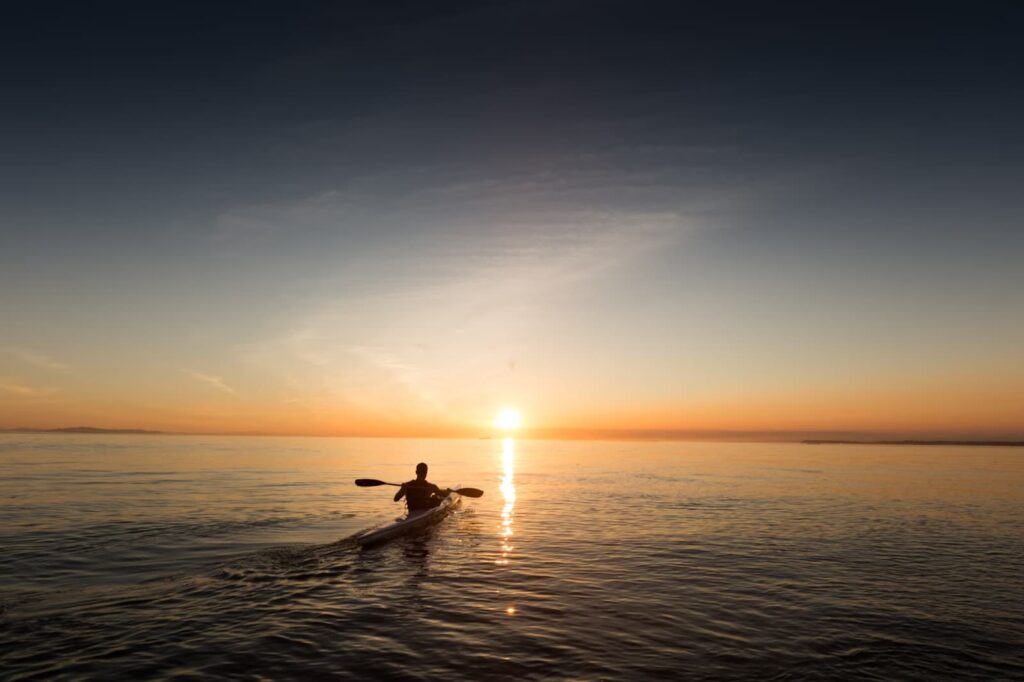
A digital detox involves stepping away from screens, social media, and the internet to reconnect with the present moment and the natural world around you. For many people, the beach represents the perfect environment for such a detox. The combination of natural beauty, soothing sounds, and fresh air creates an ideal setting to unwind and escape the stresses of daily life.
One of the primary benefits of a digital detox on the beach is the opportunity to fully immerse yourself in the experience. Without the distractions of technology, you can focus on the simple pleasures of beach life—swimming in the ocean, reading a good book, collecting seashells, or simply lying on the sand and listening to the waves. This kind of mindful relaxation can have profound effects on your mental and physical well-being. Studies have shown that spending time in nature, away from screens, can reduce stress, improve mood, and enhance creativity.
Additionally, a digital detox allows you to reconnect with yourself and those around you. Whether you’re traveling solo or with loved ones, putting away your devices can lead to more meaningful interactions and deeper connections. Conversations flow more naturally without the constant pull of notifications, and you can be fully present with the people you’re with. For families, a digital detox can be an opportunity to strengthen bonds, create lasting memories, and enjoy quality time together without the distractions of work emails, social media, or online games.
The Case for Tech-Enhanced Relaxation
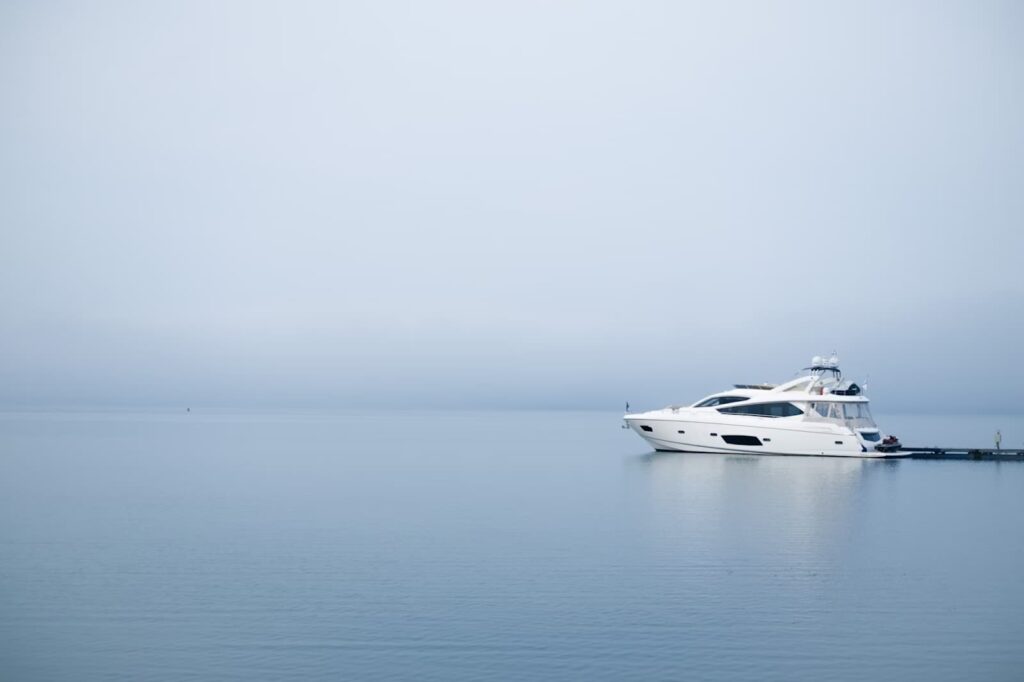
While the benefits of a digital detox are undeniable, modern technology also offers tools that can enhance your beach experience in ways that weren’t possible before. Rather than completely disconnecting, some people find that using technology thoughtfully can add convenience, enjoyment, and even deeper relaxation to their time on the beach.
For instance, music lovers might bring a portable speaker to the beach to enjoy their favorite tunes while lounging on the sand. The right playlist can elevate the mood, whether you’re looking to relax with soothing melodies or energize with upbeat tracks. Similarly, e-readers and tablets make it easy to carry a library of books with you, allowing you to switch between genres or dive into a new novel without lugging around heavy paperbacks.
Technology can also be a great tool for capturing memories. Smartphones with high-quality cameras enable you to take stunning photos and videos of your beach adventures. Whether it’s a breathtaking sunset, a playful moment in the waves, or a family photo, these digital memories can be cherished and shared with others long after the vacation is over.
Moreover, for those who love exploring, there are apps that can enhance your beach experience by providing information about the local area, including tide times, weather forecasts, and nearby attractions. These tools can help you plan your day more effectively, ensuring that you make the most of your time by the sea.
Tech-enhanced relaxation can also include apps designed to promote mindfulness and relaxation. Guided meditation apps, for example, can help you find inner calm while you’re sitting on the beach, allowing you to combine the natural benefits of the ocean with the structured guidance of a meditation session. Similarly, fitness apps can guide you through beach yoga sessions or other outdoor exercises, making it easier to stay active while enjoying the scenery.
Finding Balance on the Ocean Shore
The key to a fulfilling beach experience lies in finding a balance that works for you. Rather than strictly adhering to a digital detox or fully embracing tech-enhanced relaxation, consider a hybrid approach that allows you to enjoy the best of both worlds.
Start by setting clear intentions for your beach trip. Ask yourself what you hope to achieve—whether it’s deep relaxation, quality time with loved ones, or simply enjoying the beauty of the ocean. Once you’ve identified your goals, you can make more intentional choices about how you use technology.
For instance, you might decide to designate specific times of the day for tech use, such as checking your phone in the morning and evening while keeping it off during the peak hours of beach relaxation. This approach allows you to stay connected without letting technology dominate your experience. Alternatively, you could choose to unplug entirely for part of the day, using that time to engage in activities that don’t require screens, such as swimming, hiking, or exploring the shoreline.
Another strategy is to be selective about the technology you bring to the beach. Consider leaving your work-related devices at home or in your hotel room, focusing instead on tools that enhance your relaxation and enjoyment. If you’re bringing a tablet, download content in advance so that you don’t need to rely on Wi-Fi or mobile data, reducing the temptation to check emails or scroll through social media.
It’s also important to stay mindful of how technology is affecting your experience. If you find that you’re becoming more focused on capturing the perfect photo than enjoying the moment, it might be a sign to put the camera down and simply be present. On the other hand, if you’re using a mindfulness app to enhance your relaxation, embrace it as a tool that complements your beach experience.
Finally, remember that the beach is a place of natural beauty, and it’s worth taking the time to appreciate it without distractions. Spend time observing the waves, feeling the sand between your toes, and listening to the sounds of the ocean. These moments of connection with nature can be deeply restorative and are often the most memorable parts of any beach trip.
Conclusion: The Best of Both Worlds
Ultimately, whether you choose a digital detox or tech-enhanced relaxation on the ocean shore, the goal is to create a beach experience that rejuvenates you and leaves you feeling refreshed. By finding a balance between unplugging and staying connected, you can enjoy the tranquility of the ocean while still taking advantage of the conveniences and pleasures that modern technology offers.
Remember, there’s no one-size-fits-all approach to relaxation. What matters most is that you create a beach experience that aligns with your needs and preferences, allowing you to make the most of your time by the sea. So pack your bags, choose your tech wisely, and get ready to enjoy a well-balanced beach getaway that offers the best of both worlds.
The post Digital Detox or Tech-Enhanced Relaxation? Finding Balance on the Ocean Shore appeared first on Ocean Data Portal.
]]>The post Exploring Coastal Routes: Seamless Transitions from Sea to Air appeared first on Ocean Data Portal.
]]>The Appeal of Coastal Routes
Coastal routes have long been celebrated for their breathtaking scenery and diverse ecosystems. From the rugged cliffs of the Pacific Coast Highway in California to the serene beaches of the Amalfi Coast in Italy, these routes offer a perfect balance of natural beauty and cultural richness. Traveling along a coastline allows you to experience the rhythm of the ocean, witness the interplay of land and sea, and discover the hidden gems that lie along the shore.
One of the most appealing aspects of coastal routes is the variety of landscapes they traverse. In a single journey, you might pass through sandy beaches, lush forests, rocky cliffs, and charming seaside villages. This diversity of scenery keeps the journey exciting and unpredictable, with each turn revealing a new and stunning vista.
Moreover, coastal routes often provide opportunities for outdoor activities such as hiking, kayaking, and snorkeling, making them ideal for adventure enthusiasts. The combination of land and sea offers endless possibilities for exploration and discovery, whether you’re trekking along coastal trails, diving into crystal-clear waters, or simply relaxing on a secluded beach.
The Magic of Air Travel Over Coastal Regions

While traveling by sea offers an intimate connection with the coastline, taking to the skies provides an entirely different perspective. Aerial views of coastal regions reveal the grandeur of the landscape in ways that are impossible to appreciate from the ground. The sweeping vistas of the ocean meeting the shore, the intricate patterns of waves, and the contrast between the land and water are all highlighted when viewed from above.
Air travel over coastal regions allows you to witness the full scale of the coastline’s beauty. You can see how the land undulates and curves, how rivers and estuaries carve their way to the sea, and how islands dot the ocean like jewels. This bird’s-eye view provides a sense of the vastness and interconnectedness of the natural world.
In addition to the visual spectacle, air travel also offers practical benefits for coastal journeys. It allows you to cover large distances quickly, making it possible to explore multiple coastal destinations in a single trip. Whether you’re flying from one coastal city to another or taking a scenic flight over a particularly stunning stretch of coastline, the ability to seamlessly transition from sea to air adds a new dimension to your travel experience.
Combining Sea and Air Travel for a Unique Experience
The true magic of coastal routes is unlocked when you combine sea and air travel, creating a journey that is as diverse and dynamic as the landscape itself. By integrating these two modes of transportation, you can craft a travel experience that is both comprehensive and deeply immersive.
Imagine starting your journey on a coastal cruise, leisurely exploring the shoreline and stopping at various ports along the way. As you sail, you can enjoy the slow, rhythmic movement of the boat, taking in the sights, sounds, and smells of the ocean. You might explore bustling harbor towns, visit historical sites, or simply bask in the sun on deck as the coastline passes by.
Then, at a key point in your journey, you transition to air travel, taking a scenic flight over the very coastline you’ve been exploring. This shift from sea to air allows you to see the same landscape from a completely different angle, offering a fresh perspective on the places you’ve visited. The contrast between the close-up, tactile experience of sailing and the expansive, panoramic view from the air adds depth and richness to your travel experience.
Moreover, air travel can serve as a bridge between different coastal regions, enabling you to explore a broader range of destinations. For example, you could start your journey on the west coast of the United States, cruising along the Pacific coastline, and then take a flight to Mexico’s Baja Peninsula, where you continue your coastal exploration. This combination of sea and air travel allows you to experience the unique qualities of each region while also appreciating the larger geographical context that connects them.
Planning a Seamless Coastal Journey

To fully enjoy the experience of transitioning from sea to air, careful planning is essential. Here are some tips for creating a seamless coastal journey that combines both modes of travel:
- Choose Complementary Destinations: When planning your route, select coastal regions that offer a variety of experiences and landscapes. For example, you might pair a rugged, dramatic coastline with a more serene and tropical destination to create contrast and diversity in your journey.
- Coordinate Travel Logistics: Ensure that your sea and air travel connections are well-coordinated to minimize disruptions. This might involve arranging private transfers or selecting flights that align with your cruise schedule. Flexibility is key, so be prepared for potential changes due to weather or other factors.
- Consider Scenic Flights: Incorporate scenic flights into your itinerary to maximize the visual impact of your journey. Many coastal regions offer helicopter or small plane tours that provide stunning aerial views of the landscape. These flights can be a highlight of your trip, offering unforgettable memories.
- Pack Accordingly: When combining sea and air travel, it’s important to pack appropriately for both environments. This might mean bringing layers for cooler ocean breezes, as well as lighter clothing for warmer climates. Also, consider the limitations of luggage space on smaller planes or boats.
- Embrace Flexibility: Coastal weather can be unpredictable, so it’s important to remain flexible and adaptable in your plans. Be open to adjusting your itinerary if necessary, and take advantage of unexpected opportunities that may arise during your journey.
Capturing the Experience
The combination of sea and air travel along coastal routes offers a wealth of opportunities for photography and storytelling. Whether you’re capturing the vibrant colors of a coastal sunset, the intricate details of a rocky shoreline, or the sweeping vistas from a scenic flight, these images will serve as a lasting record of your journey.
Consider creating a travel journal or blog to document your experiences, combining photos, descriptions, and personal reflections. This not only allows you to relive your journey but also provides a way to share your adventure with others.
Conclusion: The Ultimate Coastal Adventure
Exploring coastal routes through the seamless transition from sea to air offers a travel experience like no other. By combining the intimacy of sailing with the grandeur of flying, you can fully appreciate the diverse beauty of the world’s coastlines. This approach allows you to see the landscape from multiple perspectives, deepening your connection to the places you visit and enriching your overall travel experience.
Whether you’re a seasoned traveler or embarking on your first coastal adventure, integrating sea and air travel into your journey promises a unique and unforgettable experience. So set sail, take to the skies, and discover the magic of coastal routes as you explore the world from sea to air.
The post Exploring Coastal Routes: Seamless Transitions from Sea to Air appeared first on Ocean Data Portal.
]]>The post Adrift in Wonder: An Ancient Mariner’s Encounters with Ocean’s Secrets appeared first on Ocean Data Portal.
]]>The Call of the Sea
Ye see, I’ve been sailin’ these vast, briny depths for nigh on seven decades now. The sea, she’s in me blood, coursing through these weathered veins like the very tides themselves. And in all me years, I’ve seen sights that would make even the most hardened sailor’s jaw drop faster than an anchor in a storm.
Let me tell ye, the ocean’s a fickle mistress, full of mysteries deeper than the Mariana Trench. She’s got more secrets than a politician’s closet, and I’ve been lucky enough to peek behind her watery curtain more times than I can count on me gnarled old fingers.
Creatures of the Deep
Now, ye might think ye know a thing or two about the beasts that lurk beneath the waves. Whales, sharks, and the like. But let me tell ye, there’s more to the ocean’s menagerie than meets the eye.
The Colossal Squid’s Dance
I remember clear as day, it was back in ’62, off the coast of New Zealand. The moon was full, casting an eerie glow on the choppy waters. Suddenly, the sea began to churn and bubble like a witch’s cauldron. And then, rising from the depths like some ancient god, came the largest creature I’d ever laid eyes on.
It was a colossal squid, its tentacles longer than our ship and eyes the size of dinner plates. But it weren’t attacking, no sir. It was… dancing. Twirling and swaying in the moonlight, putting on a show that would make them fancy ballet dancers green with envy.
The Glowing Seas
And let me tell ye about the time we sailed through waters that glowed brighter than a lighthouse on a foggy night. It was off the coast of Puerto Rico, in what they call the bioluminescent bay. The water was alive with tiny creatures, each one sparkling like a diamond. As our ship cut through the waves, it left a trail of blue fire in its wake. It was like sailin’ through the very stars themselves.
Mysteries of the Deep
But it ain’t just the livin’ things that make the ocean a wonderland of marvels. No sir, there’s plenty of mysteries hidden in the very waters themselves.
The Underwater Waterfall
Have ye ever heard of an underwater waterfall? Sounds like nonsense, don’t it? But I swear on me mother’s grave, I’ve seen it with me own two eyes. Off the coast of Mauritius, there’s a place where the ocean floor drops away suddenly, creating the illusion of a massive waterfall beneath the waves. It’s a sight that’ll make ye question everything ye thought ye knew about the world.
The Green Flash
And then there’s the green flash. Many a sailor’s claimed to see it, but few landlubbers believe. It’s a phenomenon that occurs just as the sun dips below the horizon, when for a split second, a green light flashes across the sky. I’ve seen it meself, and let me tell ye, it’s like catchin’ a glimpse of magic itself.
Lost Treasures and Sunken Cities
Now, I know what some of ye are thinkin’. “What about the treasure, old man? Tell us about the gold!” Well, settle down, ye greedy gulls. I’ve got tales of riches beyond yer wildest dreams.
The Lost City of Atlantis
Aye, ye’ve all heard the stories of Atlantis, the sunken city of legend. But did ye know that there are real lost cities beneath the waves? I once dove in the waters off the coast of Egypt, in a place called Heracleion. There, beneath the murky depths, lay an entire city, preserved for thousands of years. Statues of ancient gods, crumbling temples, and treasures beyond imaginin’. It was like steppin’ back in time, I tell ye.
The Treasure of the Atocha
And if it’s gold yer after, let me tell ye about the Nuestra Señora de Atocha. A Spanish galleon, she was, sunk in a hurricane off the Florida Keys back in 1622. For centuries, her treasure lay hidden beneath the sand and coral. But in 1985, a team of treasure hunters finally found her. Gold coins, silver bars, emeralds the size of yer fist. It was a haul worth millions, and a reminder that the sea keeps her secrets well.
The Ocean’s Changing Face
Now, I’ve been sailin’ these waters for longer than most of ye have been alive, and I’ve seen changes that would break yer heart. The ocean ain’t what she used to be, and it’s us humans that are to blame.
The Great Pacific Garbage Patch
There’s a place out in the Pacific, bigger than some countries, where the currents have gathered all our cast-off rubbish. Plastic bottles, fishin’ nets, all manner of human debris swirlin’ in a vortex of shame. It’s a soberin’ sight, and a reminder that we need to treat our oceans with more respect.
The Dying Coral Reefs
And don’t get me started on the coral reefs. I remember when the Great Barrier Reef was a riot of color, teeming with life. Now, large parts of it are bleached white as a ghost, the vibrant fish and creatures that once called it home long gone. It’s a tragedy, plain and simple.
A Call to Action
Now, I don’t mean to end on a sour note, me hearties. The ocean’s still full of wonders, waitin’ to be discovered. But it’s up to us to make sure those wonders are still there for future generations to marvel at.
So next time ye’re out on the water, or even just walkin’ along the shore, take a moment to appreciate the majesty of the sea. And maybe, just maybe, do yer part to keep her clean and healthy. For in protectin’ the ocean, we’re not just savin’ the fish and the coral and the whales. We’re savin’ ourselves.
And with that, I’ll bid ye farewell. The sea’s callin’ me name once again, and there’s still plenty of mysteries out there waitin’ to be unraveled. So here’s to the ocean, in all her terrible beauty and awesome wonder. May she continue to inspire and amaze us for generations to come.
Fair winds and following seas to ye all!
The post Adrift in Wonder: An Ancient Mariner’s Encounters with Ocean’s Secrets appeared first on Ocean Data Portal.
]]>The post Why Innisfil is the Ultimate Destination for Maritime Lovers appeared first on Ocean Data Portal.
]]>The Enchanting Waters of Lake Simcoe
Lake Simcoe, the crown jewel of Innisfil, is a vast expanse of shimmering water that beckons sailors, kayakers, and fishing enthusiasts alike. This lake, with its crystal-clear waters and abundant marine life, offers a slice of maritime heaven right in the heart of Canada. Whether you’re an experienced sailor or a novice eager to explore, Lake Simcoe provides endless opportunities for aquatic adventures.
Sailing on Lake Simcoe
The gentle breezes that dance across Lake Simcoe make it an ideal spot for sailing. The Innisfil Yacht Club, a cornerstone of the local sailing community, offers a welcoming haven for sailors of all levels. Here, maritime lovers can dock their boats, share stories of their nautical journeys, and participate in local regattas. The club’s events are a vibrant celebration of maritime culture, fostering a sense of camaraderie among sailors.
Fishing and Water Sports
For those who prefer the thrill of the catch, Lake Simcoe is renowned for its excellent fishing. The lake is home to a variety of fish species, including perch, bass, and trout, making it a favorite spot for anglers. Additionally, the calm waters are perfect for kayaking, paddleboarding, and even scuba diving, providing a myriad of ways to immerse yourself in maritime activities.
A Community Embracing Maritime Heritage
Innisfil is not just a town with access to a beautiful lake; it’s a community that deeply values its maritime heritage. The town hosts numerous events and festivals celebrating its connection to the water. The annual “Maritime Festival” is a highlight, featuring boat parades, seafood feasts, and historical reenactments that bring the town’s nautical past to life.
Real Estate Opportunities for Maritime Enthusiasts
For those captivated by the maritime lifestyle, Innisfil offers an array of real estate opportunities that provide the perfect blend of lakeside tranquility and modern amenities. From charming waterfront cottages to luxurious homes with private docks, there’s a property to suit every preference.
Living by the Water
Imagine waking up to the gentle lapping of waves against your dock, enjoying your morning coffee while gazing out at the serene expanse of Lake Simcoe. InnisfilHouses.Ca is your go-to resource for finding such idyllic properties. This real estate site specializes in listings that capture the essence of lakeside living, offering a comprehensive selection of homes that cater to maritime lovers.
Investing in Innisfil
Beyond the immediate joys of waterfront living, Innisfil represents a sound investment. The town is experiencing growth, with new developments and infrastructure projects enhancing its appeal. Investing in real estate here not only secures a slice of maritime paradise but also promises potential financial returns as the town continues to flourish.
A Haven for Nature Lovers
Innisfil’s appeal extends beyond its maritime wonders. The town is surrounded by natural beauty, with parks, trails, and conservation areas offering ample opportunities for outdoor activities. The Innisfil Beach Park, a local favorite, provides stunning views of the lake, sandy beaches, and picnic areas, making it a perfect spot for family outings.
Welcoming Community and Modern Amenities
Innisfil is a town that prides itself on its welcoming community spirit. Newcomers often find it easy to integrate into the local fabric, thanks to friendly neighbors and a plethora of community events. Despite its tranquil setting, Innisfil offers modern amenities, including schools, healthcare facilities, and shopping centers, ensuring residents have everything they need within reach.
Relocating to Innisfil: A Seamless Transition
Relocating to a new town can be daunting, but Innisfil makes the transition smooth and inviting. InnisfilHouses.Ca offers invaluable resources for newcomers, providing insights into the local real estate market, community highlights, and practical tips for settling in. Whether you’re moving from another part of Canada or from abroad, Innisfil warmly welcomes you to start a new chapter by the water.
Embracing the Innisfil Lifestyle: More Than Just Maritime
While Innisfil’s maritime attractions are undoubtedly a major draw, the town offers so much more. From cultural experiences to a burgeoning food scene, there’s a wealth of activities and experiences to enhance your new lifestyle.
Cultural Attractions and Events
Innisfil is a town that values its culture and heritage. The town’s library and community center are often buzzing with activities, including art exhibits, workshops, and performances. The Rizzardo Health & Wellness Centre hosts various wellness programs, emphasizing the community’s commitment to a healthy lifestyle.
One of the standout events is the Innisfil Winterfest, a celebration of the town’s vibrant community spirit. This festival features ice sculptures, sleigh rides, and local artisan markets, providing a perfect blend of cultural appreciation and winter fun.
Culinary Delights
Food lovers will find much to enjoy in Innisfil. The local culinary scene is diverse, with restaurants offering everything from fresh, locally-sourced seafood to international cuisine. The shores of Lake Simcoe are dotted with charming eateries where you can enjoy a meal with a view.
Don’t miss the local farmers’ markets, which are a hub of fresh produce and artisanal goods. Here, you can savor the tastes of Innisfil, from homemade jams to freshly baked bread, all while supporting local farmers and producers.
The Great Outdoors: Beyond the Lake
Innisfil’s appeal extends to its lush green spaces and scenic landscapes. The town is home to numerous parks and conservation areas, perfect for hiking, bird watching, and simply enjoying the natural beauty.
Hiking and Nature Trails
Nature enthusiasts will love the many trails that wind through Innisfil. The Lovers Creek Ravine offers a peaceful retreat into nature, with trails that are perfect for a morning jog or a leisurely walk. The Wilkins Walk in Barrie is another nearby option, offering trails that wind through forests and along streams, providing a perfect escape from the hustle and bustle.
Winter Activities
Innisfil’s beauty shines year-round, and winter brings its own set of activities. Ice fishing on Lake Simcoe is a popular pastime, drawing enthusiasts from all over. The town also offers excellent conditions for snowshoeing and cross-country skiing, with trails that transform into winter wonderlands.
Education and Family Life
For families considering a move, Innisfil provides excellent educational facilities and family-friendly amenities. The town boasts a range of schools, from elementary to high school, ensuring that children receive a quality education.
Family-Friendly Amenities
Innisfil is designed with families in mind. The town offers numerous recreational programs and facilities, including sports leagues, community events, and parks with playgrounds. The Innisfil ideaLAB & Library is a fantastic resource, providing not only books but also creative programs for children and teens.
Economic Opportunities
Innisfil is not just a residential haven; it’s also a place with growing economic opportunities. The town’s strategic location near major highways and proximity to Toronto make it an attractive spot for businesses and entrepreneurs.
Business and Innovation
The Innisfil Accelerates program supports local businesses and startups, fostering innovation and economic growth. The town’s forward-thinking approach includes plans for a “Smart City” initiative, aiming to integrate technology to enhance the quality of life for residents.
Healthcare and Wellness
Innisfil’s commitment to the well-being of its residents is evident in its healthcare facilities. The Rizzardo Health & Wellness Centre provides comprehensive health services, ensuring that residents have access to quality care close to home.
Wellness Programs
The town offers various wellness programs aimed at promoting a healthy lifestyle. From fitness classes to mental health workshops, Innisfil provides resources to support the physical and emotional well-being of its community.
The post Why Innisfil is the Ultimate Destination for Maritime Lovers appeared first on Ocean Data Portal.
]]>The post Deep into Ethical Whale Watching and Ocean appeared first on Ocean Data Portal.
]]>Ethical Whale Watching
- Minimized Disturbance: Ethical whale watching ensures that whales are not disturbed by maintaining a safe distance between boats and the animals. This practice prevents disruptions to the whales’ natural behaviors, such as feeding, mating, and migrating, which are essential for their survival and well-being. Operators are trained to follow guidelines that promote a non-intrusive experience for both whales and tourists.
- Regulated Tours: In many regions, whale watching tours are regulated to protect marine life. Such as whale watching tours in Monterey (reviewed by HikingInBigSur.com). These regulations can include speed limits for boats, restrictions on the number of vessels around whales, and specific areas where whale watching is not allowed. These measures help to reduce the stress and potential harm to whales, ensuring a sustainable and responsible wildlife tourism industry.
- Educational Focus: Ethical whale watching tours often incorporate educational elements to inform participants about whale species, behaviors, and conservation issues. Knowledgeable guides share insights and scientific information, helping to raise awareness about the importance of protecting these majestic creatures and their habitats. This educational component fosters a deeper connection and respect for marine life among tourists.
- Support for Conservation: Many ethical whale watching operators contribute to conservation efforts by donating a portion of their profits to whale research and protection programs. This financial support helps fund important initiatives such as monitoring whale populations, protecting critical habitats, and conducting scientific studies that inform conservation strategies.
- Sustainable Practices: Sustainable practices are a cornerstone of ethical whale watching. Operators may use eco-friendly boats with lower emissions, minimize plastic use on tours, and implement waste reduction measures. These efforts reduce the environmental footprint of whale watching activities, helping to preserve the ocean ecosystem for future generations.
- Wildlife Codes of Conduct: Ethical whale watching adheres to established codes of conduct that outline responsible practices. These guidelines include not encircling whales, avoiding sudden changes in boat speed or direction, and keeping noise levels low. By following these codes, operators minimize the impact on whales and ensure a respectful and safe viewing experience.
- Community Involvement: Ethical whale watching often involves local communities, providing economic benefits through tourism while promoting cultural respect and environmental stewardship. By engaging local residents in the operation and management of tours, these initiatives support sustainable livelihoods and enhance community-led conservation efforts.
- Non-Invasive Research: Whale watching can provide valuable platforms for non-invasive research, where scientists collect data on whale behavior, health, and population dynamics without disturbing the animals. This collaboration between researchers and tour operators enhances our understanding of whales and contributes to their conservation.
- Public Awareness: By educating tourists about marine conservation, ethical whale watching increases public awareness and advocacy for ocean health. Tourists who learn about the threats facing whales and the importance of protecting their habitats are more likely to support conservation efforts and adopt environmentally friendly practices.
- Whale Sighting Networks: Some ethical whale watching operators participate in networks that share whale sighting information. These networks help track whale movements, contributing to broader research and conservation efforts. By collaborating and sharing data, operators and researchers can better understand whale migration patterns and address conservation challenges.
Ocean Data
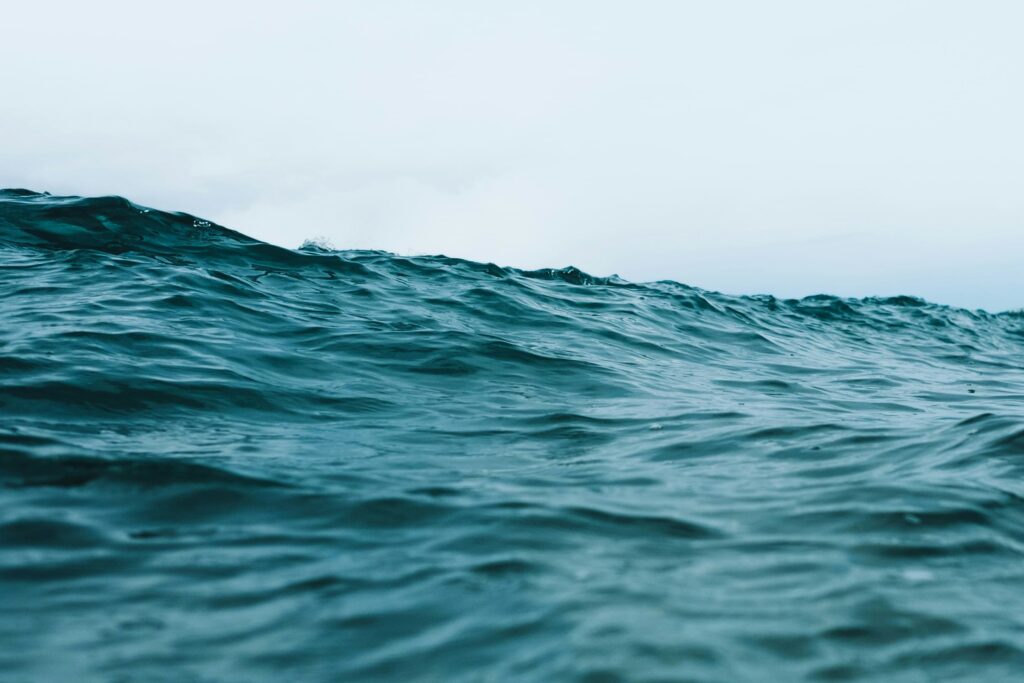
- Climate Monitoring: Ocean data plays a critical role in monitoring climate change by providing information on sea surface temperatures, sea level rise, and ocean acidification. These indicators help scientists understand the impacts of global warming on marine ecosystems and predict future climate scenarios, informing policy decisions and mitigation strategies.
- Biodiversity Assessment: Assessing marine biodiversity relies heavily on ocean data to track the distribution and abundance of species. This information is crucial for managing and protecting marine ecosystems, as it helps identify areas of high biodiversity, monitor species health, and detect changes due to environmental stressors or human activities.
- Marine Weather Forecasting: Accurate marine weather forecasting depends on comprehensive ocean data. By measuring parameters such as temperature, salinity, and currents, scientists can predict weather patterns, storms, and ocean conditions. This information is vital for the safety of maritime activities, including shipping, fishing, and recreational boating, as well as for coastal communities.
- Fisheries Management: Sustainable fisheries management relies on detailed ocean data to set quotas, monitor fish stocks, and ensure the long-term viability of marine resources. By understanding the dynamics of fish populations and their habitats, managers can make informed decisions that balance ecological health with economic needs.
- Pollution Tracking: Ocean data is essential for tracking pollution levels, including oil spills, plastic debris, and chemical contaminants. Monitoring these pollutants helps identify sources of contamination, assess their impact on marine life and ecosystems, and develop strategies for mitigation and cleanup efforts to protect ocean health.
- Satellite Observations: Satellites provide large-scale and long-term observations of the ocean, offering data on currents, temperature, sea level, and more. These observations are crucial for understanding global ocean dynamics, climate patterns, and environmental changes. Satellite data supports a wide range of applications, from weather forecasting to disaster response.
- Underwater Sensors: Networks of underwater sensors and buoys collect real-time data on various ocean parameters, such as temperature, salinity, and pressure. This data enhances our understanding of ocean conditions, supports marine research, and helps manage resources. Real-time monitoring is particularly valuable for detecting and responding to environmental changes and natural disasters.
- Coral Reef Monitoring: Ocean data is vital for monitoring the health of coral reefs, which are highly sensitive to changes in water temperature, acidity, and pollution. By collecting and analyzing data on these factors, scientists can assess the condition of reefs, identify threats, and implement conservation measures to protect these critical habitats.
- Marine Protected Areas: Data-driven approaches are essential for the design and management of Marine Protected Areas (MPAs). Ocean data helps identify critical habitats, assess the effectiveness of protection measures, and ensure that MPAs effectively conserve marine biodiversity and ecosystems. This scientific basis supports more effective conservation strategies.
- Oceanographic Research: Ocean data supports a wide range of scientific research, from studying deep-sea ecosystems to understanding ocean-atmosphere interactions. This research advances our knowledge of marine environments, informs conservation efforts, and helps address global challenges such as climate change, resource management, and biodiversity loss.
The post Deep into Ethical Whale Watching and Ocean appeared first on Ocean Data Portal.
]]>The post 14 World’s Most Stunning Ocean Tours appeared first on Ocean Data Portal.
]]>North America
- Alaska Inside Passage Cruise (USA):
- Experience glaciers, wildlife, and stunning coastal scenery. The Alaska Inside Passage Cruise offers travelers a chance to explore the rugged beauty of Alaska’s coastline, with opportunities to see towering glaciers, lush rainforests, and diverse wildlife including whales, sea lions, and bald eagles. Highlights include visiting historic towns like Juneau and Ketchikan, and scenic spots like Glacier Bay National Park.
- Caribbean Island Hopping (Caribbean Sea):
- Explore tropical islands, coral reefs, and vibrant cultures. Caribbean Island Hopping tours take you through a paradise of turquoise waters, white sandy beaches, and vibrant marine life. Each island boasts its unique charm and culture, from the lively rhythms of Jamaica to the serene beauty of the Bahamas. Enjoy activities like snorkeling, diving, and exploring local cuisine and history.
- Monterey Whale Watching Tours (California, USA):
- Observe majestic whales in their natural habitat along the stunning Monterey Bay. These tours provide a unique opportunity to see a variety of whale species, including humpbacks, gray whales, and blue whales, depending on the season. The rich marine environment of Monterey Bay also supports dolphins, sea otters, and an array of seabirds, making it a prime destination for marine wildlife enthusiasts. For the best whale watching Monterey, make sure to plan your visit during the peak migration seasons.
South America
- Galápagos Islands Cruise (Ecuador):
- Discover unique wildlife and pristine natural habitats. The Galápagos Islands Cruise is a journey through one of the most biodiverse regions in the world. Visitors can see rare species like giant tortoises, marine iguanas, and blue-footed boobies. The tours often include guided hikes, snorkeling excursions, and educational talks about the islands’ natural history and conservation efforts.
- Patagonia Fjords Expedition (Chile):
- Navigate through dramatic fjords, glaciers, and remote landscapes. This expedition takes you through the stunning scenery of Patagonia, where you’ll encounter majestic glaciers, deep fjords, and rugged mountains. The tour offers a mix of adventure and tranquility, with opportunities for hiking, wildlife watching, and exploring remote, untouched areas.
Europe
- Norwegian Fjords Cruise (Norway):
- Witness stunning fjords, picturesque villages, and the Northern Lights. A cruise through the Norwegian Fjords offers breathtaking views of steep cliffs, cascading waterfalls, and serene waters. Along the way, you can visit charming coastal towns, experience local culture, and, if you’re lucky, catch a glimpse of the mesmerizing Northern Lights.
- Greek Islands Sailing (Greece):
- Sail through the Aegean Sea visiting iconic islands like Santorini and Mykonos. This sailing adventure takes you through the crystal-clear waters of the Aegean Sea, stopping at some of Greece’s most famous islands. Enjoy the picturesque landscapes, historical sites, and vibrant nightlife of places like Santorini, Mykonos, and Crete, while savoring delicious Greek cuisine.
Africa
- Seychelles Island Hopping (Indian Ocean):
- Explore beautiful beaches, coral reefs, and lush landscapes. Seychelles Island Hopping offers an idyllic getaway in a tropical paradise. Visitors can relax on pristine beaches, snorkel in crystal-clear waters, and explore lush forests teeming with unique flora and fauna. The tours also provide a glimpse into the Creole culture and local way of life.
- Mozambique Coastal Tour (Mozambique):
- Discover pristine beaches, vibrant marine life, and rich cultural heritage. The Mozambique Coastal Tour takes you along the beautiful Indian Ocean coastline, known for its stunning beaches, diverse marine ecosystems, and cultural richness. Enjoy activities like diving in the Bazaruto Archipelago, visiting historic sites in Ilha de Moçambique, and interacting with local communities.
Asia
- Maldives Atoll Cruise (Maldives):
- Experience luxury resorts, crystal-clear waters, and stunning coral reefs. A Maldives Atoll Cruise offers the ultimate in luxury and relaxation. Cruise between secluded atolls, each offering luxurious resorts, world-class diving, and breathtaking underwater landscapes. Indulge in spa treatments, water sports, and romantic dinners under the stars.
- Vietnam and Cambodia River Cruise (Mekong River):
- Navigate through cultural landmarks, floating markets, and scenic landscapes. This river cruise takes you through the heart of Southeast Asia, along the mighty Mekong River. Discover the rich history and culture of Vietnam and Cambodia, visiting ancient temples, bustling markets, and traditional villages. The cruise combines comfort with adventure, providing a deep insight into the region’s way of life.
Australia and Oceania

- Great Barrier Reef Cruise (Australia):
- Snorkel and dive in the world’s largest coral reef system. The Great Barrier Reef Cruise offers an unforgettable experience exploring one of the world’s natural wonders. With opportunities for snorkeling, diving, and glass-bottom boat tours, visitors can marvel at the vibrant coral reefs and abundant marine life. The tours also highlight the importance of reef conservation.
- Fiji Island Hopping (Fiji):
- Explore tropical islands, traditional villages, and vibrant marine life. Fiji Island Hopping tours provide a blend of adventure and relaxation in the South Pacific. Visit multiple islands, each offering unique experiences such as cultural performances, traditional ceremonies, and stunning underwater environments. The friendly Fijian hospitality and breathtaking landscapes make this an unforgettable journey.
Antarctica
- Antarctic Peninsula Expedition (Antarctica):
- Witness dramatic icebergs, unique wildlife, and remote landscapes. The Antarctic Peninsula Expedition is a journey to the world’s most remote and pristine wilderness. Travelers can explore the icy landscapes, encounter wildlife such as penguins, seals, and whales, and participate in activities like ice climbing and kayaking. The expedition offers a unique perspective on the planet’s last great frontier.
The post 14 World’s Most Stunning Ocean Tours appeared first on Ocean Data Portal.
]]>The post Unlocking the Depths of Ocean Data: Navigating Through the Ocean Data Portal appeared first on Ocean Data Portal.
]]>A. Overview of the Ocean Data Portal website
B. Importance of ocean data in understanding and protecting marine ecosystems
II. Exploring Ocean Data Resources
A. Diverse range of data sets available on the Ocean Data Portal
B. Applications of ocean data in scientific research, conservation efforts, and policymaking
III. Navigating the Ocean Data Portal Interface
A. User-friendly features and tools for accessing and visualizing data
B. Customization options for tailoring data queries and analyses to specific research needs
IV. Case Studies: Real-world Applications of Ocean Data
A. Examples of how ocean data has been used to study marine biodiversity and ecosystem dynamics
B. Success stories of collaborative research initiatives facilitated by the Ocean Data Portal
V. Futon Sofa Bed: A Blend of Comfort and Functionality
A. Introduction to the concept of futon sofa beds and their evolution
B. Features and benefits of futon sofa beds, including versatility and space-saving design
C. Linking the comfort and functionality of futon sofa beds to the accessibility and usability of ocean data through the Ocean Data Portal
VI. Sustainable Living with Futon Sofa Beds from Alibene.com
A. Overview of Alibene.com as a provider of Scandinavian-style furniture
B. Emphasis on sustainability and quality craftsmanship in Alibene’s futon sofa beds
C. Incorporating eco-friendly furniture options into a sustainable lifestyle
VII. Futon Sofa Beds in Modern Interior Design
A. Design trends and aesthetic considerations when incorporating futon sofa beds into home decor
B. Inspiration and tips for maximizing the versatility and style of futon sofa beds in various living spaces
VIII. Conclusion: Empowering Exploration and Comfort
A. Recap of the Ocean Data Portal’s role in facilitating access to ocean data for research and conservation efforts
B. Reflection on the comfort, functionality, and versatility offered by futon sofa beds from Alibene.com
C. Encouragement to explore the depths of ocean data while enjoying the comfort and convenience of futon sofa beds in sustainable living spaces.
The Ocean Data Portal serves as a valuable resource for researchers, policymakers, and conservationists alike, providing access to a wealth of ocean data to support informed decision-making and promote sustainable management of marine resources. With a user-friendly interface and customizable features, the portal offers a seamless experience for accessing, visualizing, and analyzing ocean data.
From sea surface temperatures to ocean currents, the Ocean Data Portal hosts a diverse range of data sets collected from various sources, including satellites, research vessels, and monitoring stations. These data sets play a crucial role in understanding the complex dynamics of marine ecosystems, tracking changes over time, and identifying areas of conservation concern.
By providing open access to ocean data, the portal encourages collaboration and knowledge sharing among scientists, policymakers, and stakeholders. Case studies highlight the real-world applications of ocean data in addressing pressing environmental challenges, such as climate change, habitat loss, and overfishing.
In addition to its scientific significance, ocean data also holds educational value, offering opportunities for students and educators to explore marine science concepts in an interactive and engaging manner. The Ocean Data Portal’s educational resources and interactive tools empower learners of all ages to delve into the mysteries of the ocean and discover its wonders.
While navigating through the vast ocean of data, it’s essential to find moments of comfort and relaxation. Futon sofa beds offer the perfect blend of comfort and functionality, seamlessly transitioning from a stylish seating option to a cozy sleeping surface. With their space-saving design and versatility, futon sofa beds are ideal for modern living spaces where flexibility and practicality are paramount.
At Alibene.com, you’ll find a curated selection of Scandinavian-style futon sofa beds crafted from sustainable materials and designed to elevate any interior decor. With a focus on quality craftsmanship and eco-friendly practices, Alibene’s futon sofa beds embody the principles of sustainability and style.
Incorporating futon sofa beds into your home decor not only enhances comfort but also promotes sustainable living. By choosing eco-friendly furniture options like those offered by Alibene.com, you can reduce your environmental footprint and create a more harmonious living space.
In conclusion, as we navigate through the vast ocean of data provided by the Ocean Data Portal, let’s not forget to find moments of comfort and relaxation with futon sofa beds from Alibene.com. By empowering exploration and comfort, we can create a more sustainable and enjoyable living environment for ourselves and future generations.
The post Unlocking the Depths of Ocean Data: Navigating Through the Ocean Data Portal appeared first on Ocean Data Portal.
]]>The post The Oldest Coral Reefs in the World appeared first on Ocean Data Portal.
]]>5. Red Sea Coral Reefs
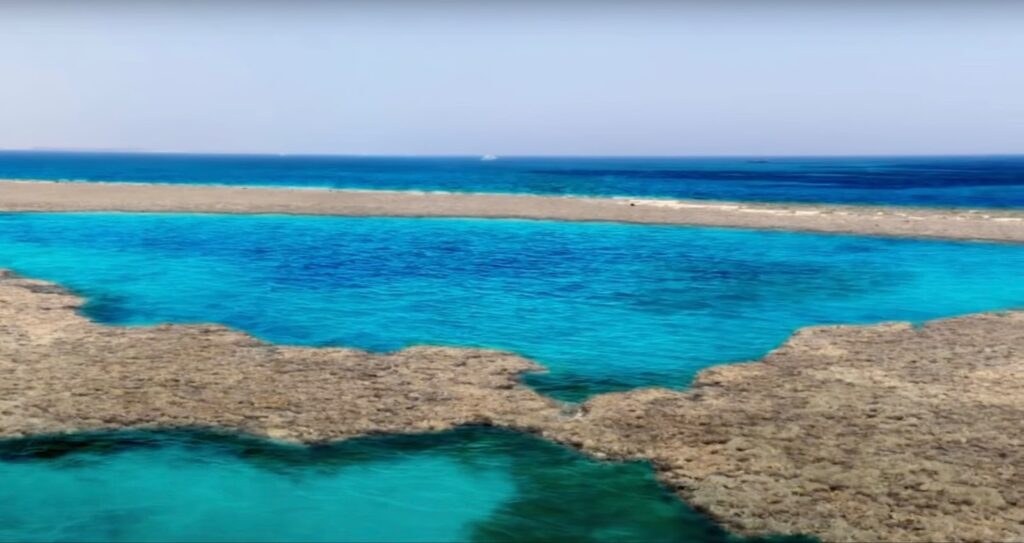
Age: Estimated to be around 5,000 to 7,000 years
Formation Period: Holocene Epoch
The Red Sea, renowned for its stunning coral reefs, boasts a rich history dating back nearly 7,000 years. This world-famous SCUBA location is home to one of the oldest reef systems on the planet. Despite being relatively young compared to other ancient reefs, the Red Sea has garnered global recognition as a prime destination for SCUBA divers, researchers, and ocean enthusiasts alike.
The Red Sea’s Rich Biodiversity
Spanning approximately 2,000 kilometers, the Red Sea is adorned with fringing reefs that harbor a diverse range of marine life. From sea turtles and snakes to approximately 175 species of nudibranch and numerous shark species, this vibrant ecosystem is teeming with biodiversity. Additionally, the Red Sea’s reef system supports an abundance of stony coral, contributing to its allure as a haven for marine enthusiasts and scientists.
Unique Geological Features
The geological history of the Red Sea has played a pivotal role in shaping its coral reefs. The region’s tectonic activity and subsequent rift formation have contributed to the creation of its distinctive underwater landscapes. As a result, the Red Sea’s coral reefs stand as a testament to the enduring interplay between geological forces and marine life, offering a captivating glimpse into the Earth’s natural history.
Conservation Efforts and Challenges
Despite its ancient origins, the Red Sea’s coral reefs face modern-day threats, including climate change, pollution, and overfishing. Conservation initiatives and marine protected areas have been established to safeguard these invaluable ecosystems. Through concerted efforts, stakeholders aim to preserve the Red Sea’s coral reefs for future generations, underscoring the importance of sustainable practices and environmental stewardship.
| Species | Quantity |
|---|---|
| Sea Turtles | Abundant |
| Nudibranch Species | Approximately 175 species |
| Shark Species | Diverse range |
| Stony Coral | Abundance |
4. Tubbataha Reefs Natural Park, Philippines
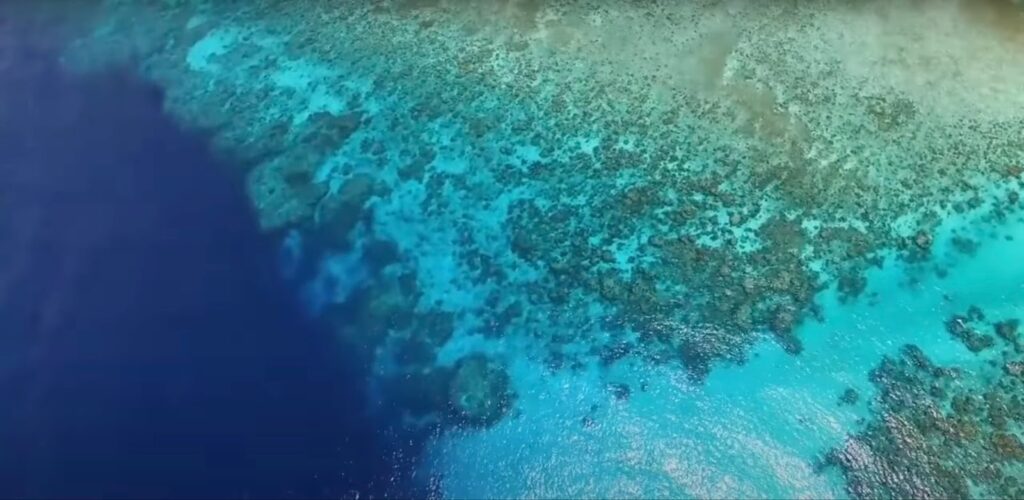
Age: Estimated to be around 5,000 to 7,000 years
Formation Period: Holocene Epoch
Located in the Sulu Sea, the Tubbataha Reefs Natural Park in the Philippines stands as a testament to the enduring splendor of ancient coral reefs. With a history dating back thousands of years, this UNESCO World Heritage Site is celebrated for its exceptional biodiversity and pristine marine habitats.
Pristine Marine Ecosystem
The Tubbataha Reefs Natural Park encompasses a vast expanse of coral reefs, lagoons, and seagrass beds, providing a sanctuary for an extraordinary array of marine species. Its remote location and protected status have contributed to the preservation of its pristine ecosystems, allowing for the flourishing of diverse coral formations and marine life.
Conservation and Management
Recognizing the ecological significance of the Tubbataha Reefs, rigorous conservation measures and management strategies have been implemented to safeguard this invaluable marine park. Strict regulations, surveillance efforts, and stakeholder collaboration have been instrumental in preserving the park’s ecological integrity and promoting sustainable tourism practices.
Ecotourism and Research
The Tubbataha Reefs Natural Park serves as a hub for ecotourism and scientific research, attracting visitors and researchers from around the globe. Its unparalleled beauty and biological richness offer a unique opportunity for individuals to experience the wonders of the underwater world while contributing to ongoing conservation and research endeavors.
| Marine Species | Quantity |
|---|---|
| Coral Varieties | Diverse range |
| Fish Species | Abundance |
| Marine Mammals | Varied species |
| Seabirds | Flourishing populations |
3. Great Barrier Reef, Australia
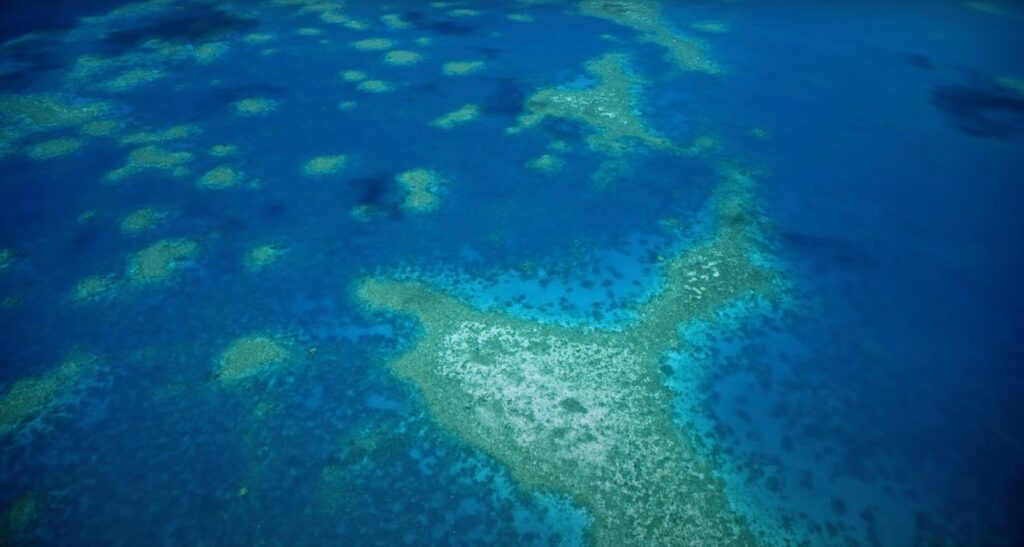
Age: Estimated to be around 600,000 years
Formation Period: Pleistocene Epoch
Widely revered as one of the most iconic natural wonders, the Great Barrier Reef in Australia holds a storied past that spans hundreds of thousands of years. This colossal reef system, stretching over 2,300 kilometers, is a testament to the enduring legacy of ancient coral formations and the remarkable diversity of marine life they support.
Extraordinary Biodiversity
The Great Barrier Reef is renowned for its extraordinary biodiversity, encompassing a kaleidoscope of coral species, fish, marine mammals, and countless other organisms. Its intricate network of reefs, islands, and cays provides vital habitats for an extensive array of marine life, making it a globally significant ecological treasure.
Environmental Pressures and Resilience
In recent decades, the Great Barrier Reef has faced unprecedented challenges due to climate change, pollution, and human activities. Despite these pressures, the reef exhibits remarkable resilience, showcasing the adaptive capacity of coral ecosystems in the face of adversity. Ongoing research and conservation efforts aim to bolster the reef’s ability to withstand environmental stressors and promote its long-term viability.
Indigenous Connections and Cultural Significance
For millennia, the Great Barrier Reef has held profound cultural significance for Indigenous Australian communities, serving as a source of spiritual connection and traditional knowledge. The reef’s cultural heritage underscores the intrinsic link between Indigenous peoples and the natural world, highlighting the imperative of preserving both ecological and cultural heritage for future generations.
| Coral Species | Over 600 species |
|---|---|
| Fish Species | More than 1,500 species |
| Marine Mammals | Varied populations |
| Seabirds | Flourishing communities |
2. Eniwetok Atoll, Marshall Islands
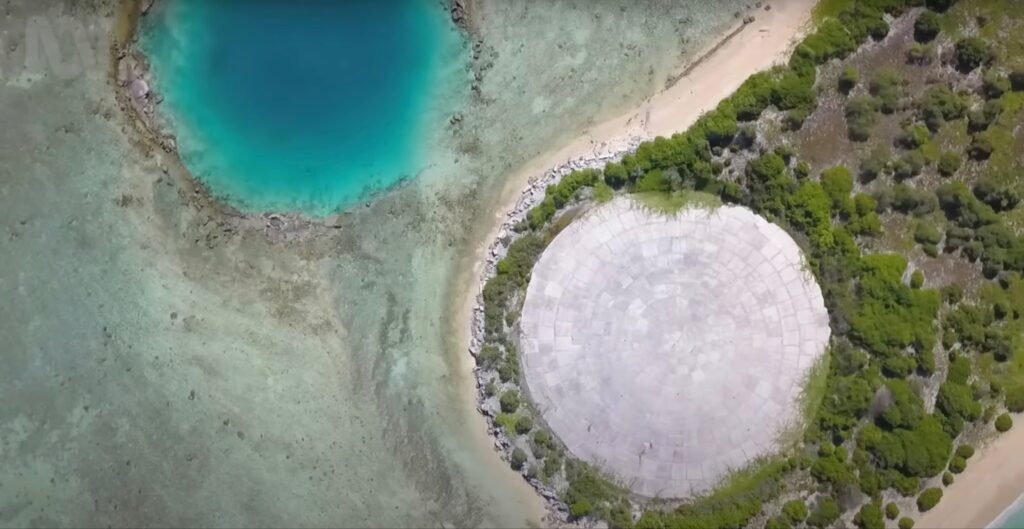
Age: Estimated to be around 10,000 to 15,000 years
Formation Period: Holocene Epoch
Nestled within the Pacific Ocean, the Eniwetok Atoll in the Marshall Islands harbors a timeless treasure—a coral reef system that has thrived for millennia. With a history spanning thousands of years, this atoll exemplifies the enduring resilience and majesty of ancient coral formations in the midst of the vast ocean expanse.
Geological Splendor
The Eniwetok Atoll’s geological origins and unique topography have played a pivotal role in shaping its coral reef system. The atoll’s lagoon, expansive reef flats, and diverse reef structures contribute to its striking beauty and ecological significance, offering a glimpse into the dynamic interplay between geological processes and marine life.
Environmental Stewardship
Efforts to protect and conserve the Eniwetok Atoll’s coral reefs have been paramount in ensuring the longevity of this invaluable ecosystem. Collaborative initiatives involving local communities, governmental agencies, and conservation organizations have been instrumental in promoting sustainable practices, mitigating environmental threats, and fostering a deeper understanding of the atoll’s ecological complexities.
Scientific Exploration and Discovery
The Eniwetok Atoll serves as a living laboratory for scientific inquiry, drawing researchers and explorers eager to unravel its mysteries and understand the intricate dynamics of its coral reef ecosystems. Ongoing studies and monitoring programs provide valuable insights into the atoll’s ecological resilience, adaptation mechanisms, and responses to environmental changes.
| Coral Cover | Extensive reef formations |
|---|---|
| Fish Diversity | Abundance of species |
| Invertebrate Life | Rich and varied populations |
| Seagrass Beds | Vital habitats for marine life |
1. Chazy Fossil Reef, New York, USA
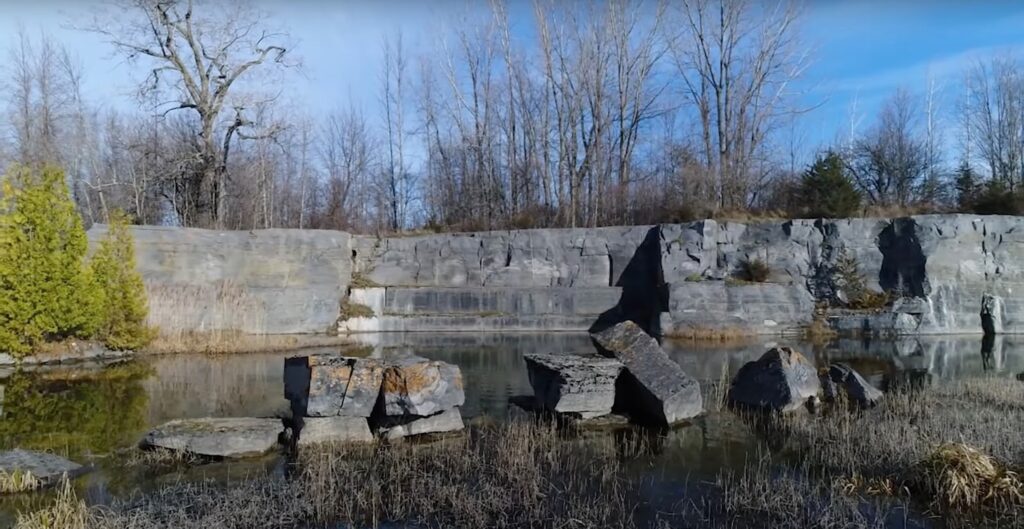
Age: Estimated to be well over 400 million years
Formation Period: Late Ordovician Period
As one of the oldest known coral reefs in the world, the Chazy Fossil Reef in New York stands as a testament to the enduring legacy of ancient marine ecosystems. Dating back over 400 million years, this fossilized reef offers a window into the distant past, providing invaluable insights into the evolution of coral reefs and the biodiversity they once supported.
Paleontological Marvel
The Chazy Fossil Reef represents a paleontological marvel, preserving a snapshot of prehistoric marine life and geological processes. Fossilized coral colonies, stromatolites, and other ancient remnants offer a rare glimpse into the ecological composition and environmental conditions of a bygone era, enriching our understanding of Earth’s geological history.
Geologic Heritage and Preservation
Designated as a National Natural Landmark, the Chazy Fossil Reef stands as a testament to the geological heritage of the United States. Preservation efforts and educational outreach initiatives aim to raise awareness about the reef’s historical significance, fostering appreciation for its ancient origins and the need to protect such invaluable geological treasures.
Educational and Scientific Significance
The Chazy Fossil Reef serves as an invaluable resource for scientific research, education, and public engagement. Its fossilized remains provide a wealth of information for paleontologists, geologists, and educators, offering a tangible link to the Earth’s ancient past and the evolutionary history of coral reefs and marine life.
| Fossilized Coral Colonies | Well-preserved specimens |
|---|---|
| Stromatolites | Ancient geological formations |
| Prehistoric Marine Life | Diverse and abundant |
| Geological Insights | Understanding Earth’s history |
Conclusion
In conclusion, the exploration of the world’s oldest coral reefs unveils a tapestry of ancient ecosystems that have endured for millennia, shaping the marine landscape and supporting a myriad of life forms. From the Red Sea’s vibrant fringing reefs to the fossilized remnants of the Chazy Fossil Reef, each of these ancient coral formations offers a unique perspective on the interplay between geological history, ecological diversity, and human stewardship. As we continue to unravel the mysteries of these ancient reefs, it becomes increasingly apparent that their preservation is not only essential for ecological balance but also for enriching our understanding of the Earth’s natural history and the wondrous diversity of life beneath the waves.
The post The Oldest Coral Reefs in the World appeared first on Ocean Data Portal.
]]>The post How Can Help Preserve Beaches and Oceans? appeared first on Ocean Data Portal.
]]>Factories

Impact on Beaches and Oceans
Factories play a substantial role in polluting beaches and oceans, primarily through the expulsion of microplastics. These tiny plastic particles find their way onto beaches and into the ocean, contributing to the degradation of marine ecosystems. Many factories produce plastics as a waste product, leading to a significant negative impact on beaches, particularly through the production of microplastics. While some of these plastics are recycled to produce new items, vast quantities still end up in the ocean annually.
What You Can Do
To combat the adverse effects of factories on beaches and oceans, individuals can reduce their consumption of disposable plastic products. By minimizing the demand for single-use plastics, the overall production and subsequent pollution can be curbed. This can be achieved through using alternatives such as paper bags, reusable containers, and eco-friendly packaging. Additionally, advocating for stricter regulations on plastic waste disposal by industries can significantly mitigate the impact of factories on coastal environments.
Impact of Factories on Beaches and Oceans
| Issue | Impact |
|---|---|
| Microplastic Pollution | Expulsion of microplastics leading to contamination of beaches and oceans, harming marine life |
| Plastic Waste | Excessive production of plastic waste as a byproduct, contributing to ocean pollution |
Other Businesses
Environmental Consequences
Apart from factories, various other businesses also contribute to beach and ocean pollution. The excessive use of plastic packaging, improper waste disposal, and lack of sustainable practices collectively lead to environmental degradation. Whether it’s retail stores, restaurants, or service providers, the impact of these businesses on coastal ecosystems cannot be overlooked.
Taking Action
Individuals can make a difference by consciously choosing to support businesses that prioritize sustainability and environmentally friendly practices. By opting for products with minimal packaging, encouraging businesses to adopt eco-friendly alternatives, and promoting responsible waste management, consumers can influence businesses to operate in a more environmentally conscious manner. Furthermore, raising awareness about the environmental impact of businesses and supporting initiatives that promote sustainable practices can drive positive change at a larger scale.
Ways to Encourage Sustainable Practices in Businesses
- Choose products with minimal packaging;
- Support businesses with eco-friendly alternatives;
- Advocate for responsible waste management.
Fishing Industry
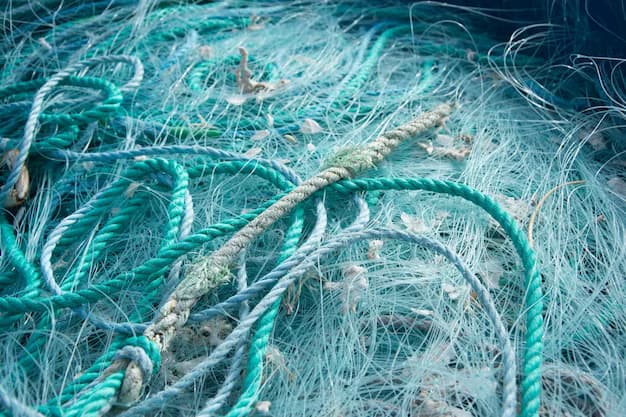
Ecological Impact
The fishing industry significantly impacts beach and ocean health through overfishing, bycatch, and habitat destruction. Overfishing disrupts marine ecosystems, leading to imbalances in fish populations and affecting the overall biodiversity of coastal areas. Additionally, bycatch, which involves the unintentional capture of non-target species, further contributes to the depletion of marine resources and disturbs the delicate balance of marine life.
Promoting Sustainable Fishing Practices
Consumers can play a vital role in promoting sustainable fishing practices by making informed choices about the seafood they consume. Opting for sustainably sourced seafood and supporting fisheries that adhere to responsible fishing practices can help reduce the ecological impact of the fishing industry on beaches and oceans. Moreover, advocating for policies that regulate fishing activities, minimize bycatch, and protect marine habitats is essential in ensuring the long-term health of coastal ecosystems.
Ecological Impact of the Fishing Industry
| Issue | Impact |
|---|---|
| Overfishing | Disruption of marine ecosystems, leading to imbalances in fish populations |
| Bycatch | Unintentional capture of non-target species, contributing to the depletion of marine resources |
| Habitat Destruction | Deterioration of marine habitats, affecting the overall biodiversity of coastal areas |
What Can We Do to Help?
Reduce Your Waste
One of the most effective ways to contribute to beach conservation is by reducing personal waste. By minimizing the use of single-use plastics, recycling, and composting, individuals can significantly decrease the amount of waste that ends up in oceans and on beaches. Embracing a zero-waste lifestyle, supporting recycling programs, and participating in beach clean-up initiatives are impactful ways to address the issue of waste pollution.
Make Our Beaches Beautiful
Engaging in community efforts to clean and maintain beaches is crucial for preserving their natural beauty. Participating in beach clean-up events, educating others about the importance of beach conservation, and supporting local initiatives aimed at beach preservation are all meaningful actions that individuals can take to contribute to the well-being of coastal environments.
Interesting Stats
- Approximately 8 million metric tons of plastic enter the ocean every year;
- Plastic pollution affects at least 267 species worldwide, including 86% of all sea turtle species, 44% of all seabird species, and 43% of all marine mammal species.
Get Involved
Advocacy and Community Engagement
Getting involved in advocacy and community engagement is essential for driving systemic change. Individuals can participate in local environmental organizations, volunteer for beach conservation projects, and advocate for policies that promote sustainable practices and protect coastal ecosystems. By actively engaging with local communities and decision-makers, individuals can amplify their impact and contribute to the collective effort of safeguarding beaches and oceans.
Supporting Conservation Initiatives
Supporting conservation initiatives and organizations dedicated to beach and ocean preservation is instrumental in addressing environmental challenges. Donating to reputable conservation groups, participating in fundraising events, and spreading awareness about the importance of beach conservation can help mobilize resources and support ongoing efforts to protect coastal environments.
Conclusion
In conclusion, the preservation of beaches and oceans requires collective action and individual commitment. By understanding the sources of pollution and taking proactive steps to address them, individuals can make a tangible difference in safeguarding coastal ecosystems. Whether it’s advocating for sustainable practices, supporting conservation initiatives, or actively participating in beach clean-up activities, every action contributes to the larger goal of protecting our beaches and oceans for future generations. Through concerted efforts and a shared dedication to environmental stewardship, we can work towards creating cleaner, healthier, and more vibrant coastal environments for all.
The post How Can Help Preserve Beaches and Oceans? appeared first on Ocean Data Portal.
]]>The post Chazy Reef: The Oldest Reef in The World appeared first on Ocean Data Portal.
]]>What is the Location and Geological Formation of the Area?
The Remarkable Landscape of Vermont
Nestled in the outstandingly beautiful landscape of Vermont, United States, the Chazy Reef spans across three of the Champlain islands. The location is a testament to the enduring beauty and geological significance of the area. The Chazy Reef is located in Champlain Lake, Vermont, showcasing the enduring legacy of ancient marine life in an area now known for its natural splendor.
Geological Formation and Ancient Origins
Beginning its journey approximately 450 million years ago during the Ordovician Period, reef-building organisms, primarily bryozoa, slowly left limestone deposits behind. Although they are reef-building organisms and often confused with coral reefs, bryozoa are more complex, older, and closely related to sponges. Making their home in what was the Iapetus Ocean, the reef eventually spread from Tennessee to Quebec and Newfoundland before conditions changed, and it was no longer able to thrive. The slow but steady process of limestone deposition over millions of years has resulted in the remarkable fossilized structure we see today.
Geological Timeline of Chazy Reef
| Geological Period | Events |
|---|---|
| Ordovician | Formation of Chazy Reef begins |
| Silurian | Expansion of Chazy Reef across the Iapetus Ocean |
| Devonian | Decline of Chazy Reef due to changing conditions |
Ecology
Ancient Ecosystems and Marine Life
The Chazy Reef provides a unique window into ancient marine ecosystems. During its prime, the reef was teeming with diverse marine life, including brachiopods, trilobites, and other invertebrates. These creatures formed a complex web of interactions, shaping the ecology of the time and leaving behind a rich fossil record that scientists continue to study and marvel at.
Environmental Significance and Modern Relevance
Studying the ancient ecology of the Chazy Reef offers valuable insights into the environmental conditions of the past. By understanding the dynamics of this ancient ecosystem, researchers can gain a deeper understanding of how marine life responded to changing environmental factors. This knowledge has implications for modern marine conservation efforts and provides a historical context for understanding the impact of human activities on marine ecosystems.
Key Species Found in Chazy Reef Fossils
- Bryozoa;
- Brachiopods;
- Trilobites;
- Invertebrates.
Fossil Diversity and Past Life
Preservation of Ancient Life Forms
The fossil record of the Chazy Reef is a treasure trove of ancient life forms. The remarkably preserved fossils offer a detailed glimpse into the biodiversity of the Ordovician Period, showcasing the intricate structures and delicate features of long-extinct organisms. These fossils provide invaluable information for paleontologists and biologists seeking to reconstruct the evolutionary history of marine life on Earth.
Unique Fossil Discoveries
Among the most striking fossil discoveries in the Chazy Reef are the exceptionally well-preserved trilobite specimens. These ancient arthropods, with their distinctive segmented bodies and calcified exoskeletons, provide a wealth of information about the morphology and behavior of these ancient creatures. Such discoveries contribute significantly to our understanding of prehistoric marine ecosystems and the evolutionary pathways of marine organisms.
Fossil Diversity in Chazy Reef
| Fossil Type | Description |
|---|---|
| Trilobites | Well-preserved arthropod fossils |
| Brachiopods | Fossilized shells of ancient organisms |
| Bryozoa | Intricate fossilized colonial organisms |
Chazy Reef’s Ecological Evolution Over Time
Changing Environmental Conditions
Over the course of millions of years, the Chazy Reef witnessed significant changes in environmental conditions. From its initial formation in the Ordovician Period to its decline in the Devonian, the reef responded to shifting oceanic currents, sea levels, and climatic variations. These changes shaped the ecological dynamics of the reef, influencing the distribution of species and the overall structure of the ancient ecosystem.
Adaptation and Resilience
Despite the challenges posed by changing environmental conditions, the organisms inhabiting the Chazy Reef demonstrated remarkable resilience and adaptability. Through periods of environmental upheaval, these ancient marine life forms persisted and evolved, leaving behind a legacy of biological innovation and ecological success. Understanding the adaptive strategies of these ancient organisms provides valuable insights into the dynamics of long-term ecological change.
Factors Influencing Ecological Evolution
- Climate fluctuations;
- Sea level changes;
- Oceanic currents.

What Led to the Demise of Chazy Reef?
Environmental Shifts and Extinction
As the environmental conditions continued to change, the once-thriving Chazy Reef faced insurmountable challenges. Shifts in oceanic chemistry, temperature, and habitat availability ultimately led to the decline and eventual extinction of the reef-building organisms. The demise of the Chazy Reef serves as a poignant reminder of the vulnerability of ecosystems to environmental perturbations and the profound impact of long-term environmental change on the stability of marine habitats.
Legacy of Extinction
While the Chazy Reef may no longer exist as a living ecosystem, its legacy endures in the form of fossilized remnants and scientific discoveries. The extinction of the reef represents a critical juncture in the ecological history of our planet, offering important lessons about the interconnectedness of environmental factors and the fragility of marine ecosystems in the face of global change.
Factors Contributing to Chazy Reef Extinction
| Environmental Factor | Impact on Chazy Reef |
|---|---|
| Oceanic chemistry changes | Decline in reef-building organisms |
| Temperature fluctuations | Disruption of ecological balance |
| Habitat loss | Reduction in suitable reef conditions |
Chazy Reef as a National Natural Landmark
Recognition and Conservation Status
In recognition of its exceptional geological and paleontological significance, the Chazy Reef has been designated as a National Natural Landmark. This prestigious status reflects the importance of preserving and studying this ancient fossil reef, ensuring that future generations can continue to learn from its remarkable legacy. The conservation efforts aimed at protecting the Chazy Reef underscore the value of safeguarding our planet’s geological heritage.
Educational and Scientific Value
The designation of the Chazy Reef as a National Natural Landmark not only highlights its geological importance but also emphasizes its role as a site of scientific inquiry and public education. By promoting research and educational initiatives centered around the Chazy Reef, conservation efforts contribute to a greater understanding of Earth’s ancient history and the processes that have shaped our planet over millions of years.
Conservation Initiatives for Chazy Reef
- Research programs focused on fossil preservation;
- Public outreach and educational programs;
- Geological site management and protection measures.
Future Challenges and Opportunities: Sustaining Chazy Reef
Conservation Imperatives
As we look to the future, the sustained preservation of the Chazy Reef presents both challenges and opportunities. Climate change, habitat degradation, and human activities pose ongoing threats to the integrity of this ancient fossil reef. Addressing these challenges requires a concerted effort to implement effective conservation measures and promote sustainable land use practices in the surrounding areas.
Scientific Exploration and Discovery
The ongoing study of the Chazy Reef offers boundless opportunities for scientific exploration and discovery. By leveraging advanced technologies and interdisciplinary research approaches, scientists can unlock new insights into the ecological evolution of ancient reefs and the broader implications for understanding Earth’s geological history. Continued scientific engagement with the Chazy Reef holds the potential to yield groundbreaking discoveries and expand our knowledge of prehistoric marine ecosystems.
Future Prospects for Chazy Reef Conservation
| Challenge | Conservation Opportunity |
|---|---|
| Climate change impacts | Implementing adaptive management strategies |
| Habitat restoration efforts | Enhancing ecological resilience of the fossil reef |
| Sustainable tourism practices | Balancing conservation with public access |
Conclusion
In conclusion, the Chazy Reef stands as a testament to the enduring legacy of ancient marine life and the profound geological forces that have shaped our planet over millions of years. From its humble beginnings in the Ordovician Period to its designation as a National Natural Landmark, the Chazy Reef continues to captivate and inspire scientists, conservationists, and enthusiasts alike. As we strive to sustain and protect this remarkable fossil reef, we honor the invaluable insights it offers into Earth’s ancient history and the interconnectedness of life and the environment. The Chazy Reef remains a timeless symbol of the enduring wonders of our planet, inviting us to explore, learn, and preserve the extraordinary treasures of our natural world.
The post Chazy Reef: The Oldest Reef in The World appeared first on Ocean Data Portal.
]]>